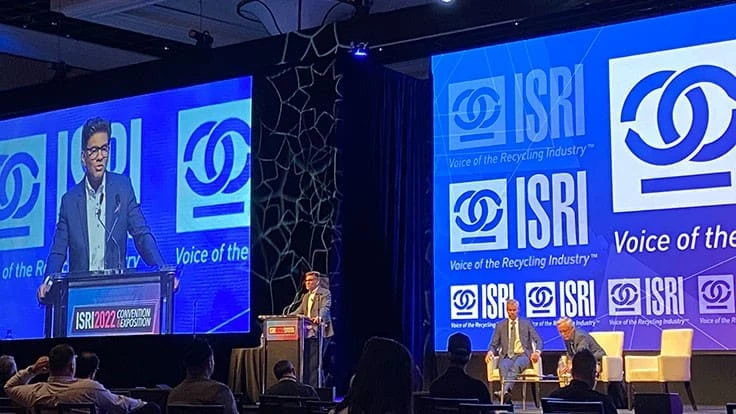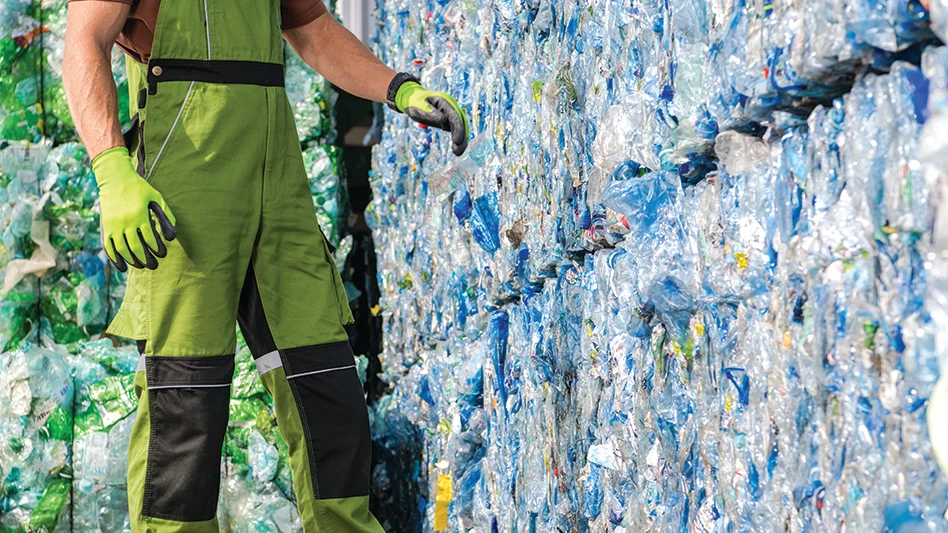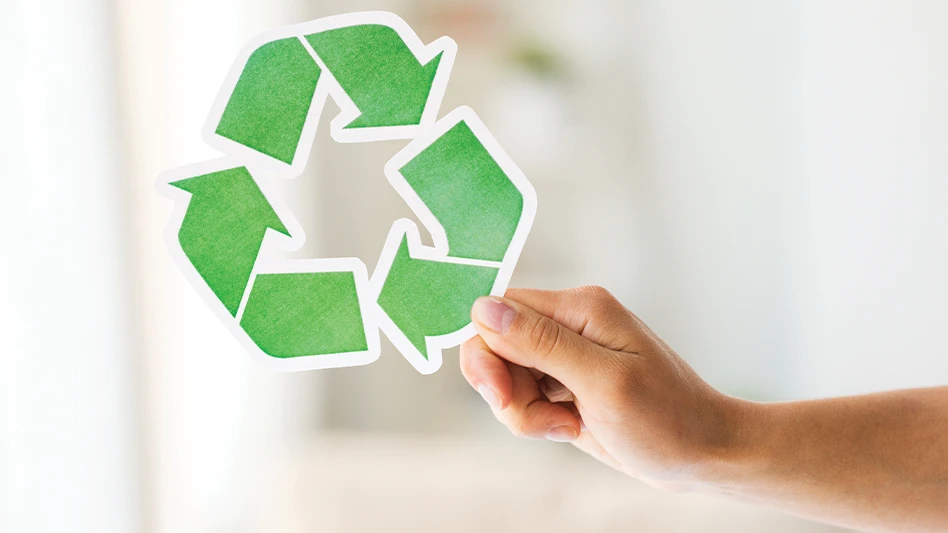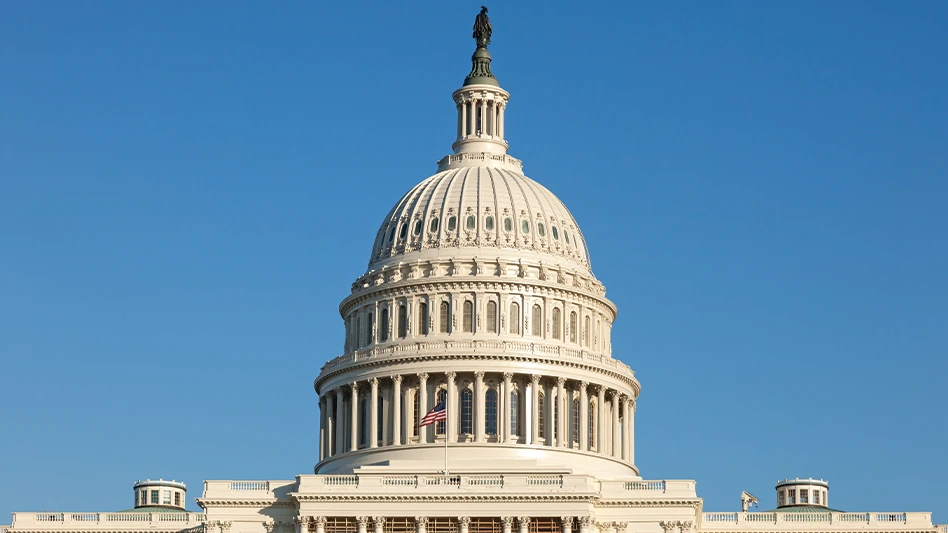
Photo by DeAnne Toto
As the Institute of Scrap Recycling Industries (ISRI), Washington, hosted its 2022 convention and exhibition from March 21-24 in Las Vegas, commodity markets were experiencing extreme volatility brought on in part by Russia’s invasion of Ukraine in late February. But the war in Ukraine is not the only factor contributing to market volatility.
Greg Wittbecker of Cru Group, the London-based firm that provides business intelligence on the global metals, mining and fertilizer industries, said a number of “unprecedented changes” are occurring in the aluminum market. He added that other factors are affecting the market that haven’t been seen in some time. “Probably the most conspicuous example of that is something called inflation that we haven't seen since like the 1980s.”
Wittbecker said that while people tend to look at inflation as something to be “feared,” commodity traders can benefit from it, “but it does require you to kind of strap in and be ready for a pretty volatile ride.”
Wittbecker spoke during the Spotlight on Aluminum session, March 23. He was joined by moderator Andrew Vida, vice president of Intrametco, Indianapolis, and Dhawal Shah, managing director of Metco Ventures LLP, Mumbai, India.
Shah said, despite his decades of experience in the industry, “I failed to estimate how quickly the situation changes in our industry,” noting intraday volatility of 16 percent to 17 percent.
In March of 2020 at the start of the pandemic, the economy was plagued by impairment and the stagnation, he said. “We all felt that it will take us a couple of years to be up and running just like before, at least minimum three, four or five years. But look at what has happened. Valuations soared, demand soared, there was a frenzy. In less than 18 months, we scripted a completely contrarian story,” Shah added, noting that now inflation and not stagnation is a concern.
Running short
Among the changes the aluminum industry is seeing is that China will no longer play a leading role in the market as it has for the last 20 years. “China, in the future, will no longer be the big driver of the primary market,” Wittbecker said. “China is clearly signaling that it's no longer going to be growing its primary production as rapidly as it has been.”
Among the other unprecedented factors he pointed to was the “massive” 2.2 million metric ton shortage of primary aluminum. “That is arguably the biggest deficit we've ever had in the history of people keeping track of such statistics,” Wittbecker said. “There's really no way for people to sugarcoat this; we're in serious trouble. We don't have enough metal. And that really was something that we were having to cope with, even before the Ukraine war broke out. That just potentially amplifies the magnitude of the problem.”
The shortage of primary aluminum is contributing to the record high physical premiums in the U.S, he said, noting that the Midwest premium hit 40 cents above the official London Metal Exchange (LME) cash price on March 22. “We're likely to see that number go higher because the market’s basically trying to figure out how to draw the remaining stock out of the hands of the financial intermediaries, the banks and traders, that hold most of the remaining discretionary stock that we can get at,” Wittbecker said.
“I think we’ve got a very good shot of seeing it hit 50 cents,” he said of the Midwest premium. “You can't deny the simple size of the deficits that we have. Here in the U.S., we still need a significant amount of imports.”
Wittbecker said Russia exports 3 million tons of aluminum per year, with 40 percent of that material going to Europe. “If they don't have access to that metal, Europe starts to become a gigantic, magnet for metal. And that'll pull the Midwest up with it. I think it's very dangerous to your health to go short the Midwest premium at this point in time.”
A lack of investment
The tightness in the aluminum market has arisen in part because, outside of China, not much investment has been made in the primary aluminum industry for a long time. Wittbecker illustrated this point by noting that the last new aluminum smelter in the U.S. was built in 1983 and the last Canadian smelter that was modernized was nearly 20 years ago.
Quoting Jeff Curry of Goldman Sachs, he said, “What we're experiencing as an economy today is the revenge of the old economy. … We stopped investing in things that make things a long time ago, and we turned to importing them from places like Russia and China, and now we're paying the price for it.”
Wittbecker asked, “How high does the price need to be to get people to put money back into our industries again?”
Low-carbon aluminum
The other unprecedented factor affecting the aluminum market is the focus on reducing carbon dioxide emissions. “We've been trading low-carbon aluminum for a very long time; we just call it scrap,” he said.
“The demand for scrap will continue to rise,” Wittbecker continued. “It will, it will take the form of more obsolete grades as opposed to primary. The big impairment to seeing that happen faster is sortation; we just have to get faster at sorting some of the obsolete grades to make them accessible for the mills.
“Scrap is not like flipping a switch. You cannot command it to show up at your door,” he said, adding that the availability of grades varies.
The move to decarbonize the industry also will lead to higher prices for aluminum, Wittbecker said. “Green ain’t cheap,” he said. “Decarbonizing all metal industries will cost money, and that is eventually going to have to show up in pricing.”
Wittbecker said primary aluminum demand is flattening in China as the country has “finally woken up to the fact that scrap is the better alternative for them than primary metal.” He noted that roughly 8 million tons of secondary capacity are being built in China. “That's the equivalent of 20 percent of their primary capacity.”
India is exporting 30 percent to 35 percent of its secondary die-casting-grade ingots to China, Shah said, as that country turns away from primary aluminum production.
Shah said about 70 percent of China’s total emissions in the nonferrous complex come from aluminum production, creating “palpable urgency” to increase secondary production, with as many as 12 million metric tons of capacity expected to come online by 2025.
Secondary production capacity also is being installed in India, South Korea, Norway, the U.K., Hungary, Turkey, Spain, France and Greece.
“Added to this, if you look at the U.S. with the expansions that have been announced from companies like Hydro, Matalco and Novelis, I think it's going to get pretty intense” in terms of scrap demand," he said. “Now, along with the chaos in the global freight industry, the shipping problems that we have, it just might happen there will be a stronger evolution of these closed loops or local markets. … I think companies will go into overdrive, penetrating through their domestic supply chains and putting in new investments in terms of collection and recycling in domestic materials.”
Supply snags
Regarding the supply chain difficulties that have emerged in the pandemic, Wittbecker said they won’t be fixed anytime soon. “We're talking about a generational-type shift in the availability of drivers, insurance costs for trucking have gone way up, congestion has gotten worse, our ports are in tough shape. Again, we haven't invested in them. Supply chains are going to remain problematic for a very long time. And then there's just no easy fix for that.”
Aluminum demand continues to grow, with lead times pushing out nearly a year, he said. However, production disruptions outside of China could impair the industry’s ability to meet that demand. Wittbecker noted some 800,000 metric tons of curtailments in Europe because of energy issues, adding that there is a “dim chance they will come back online any time soon.”
He added that Russian supply is in jeopardy. “They depend on imported alumina to keep their smelters running, one of which was in Ukraine, which is no longer operating. The Australian government just embargoed the shipments of alumina from Russal’s refinery in Australia. In aggregate, they're short about 3 million metric tons of alumina. That's the equivalent of a million and a half [metric tons] of primary metal. At some point in time, the Russians are probably going to have to rationalize their own production, even while they try to deal with the possible effects of trade sanctions.”
Shah said he agreed with Wittbecker that aluminum will remain tight because of the idling of capacities, the low inventories, the high energy costs, the China situation and the sanctions against Russia, with pricing rising as a result. However, he said the unknown remains a disruptive factor, citing the recent news that the smelters in Yunnan province in China had restored their power supplies and were firing up their idle capacities.
Trade barriers
The aluminum industry also has been dealing with more trade actions and more trade barriers in the last 10 years than it has in the previous 30 years, Wittbecker said. “We only have to sit here today and debate what's going to happen with the Russians—a great example of major potential trade sanctions that we're going to have to deal with. It's going to have an irreparable effect on the market. And we may not see the Russians come back to the market in the same form or fashion as we've seen previously.”
Regarding scrap flows, Shah noted distortions that emerged in 2018 and 2019. As a trader of mill-grade aluminum scrap, Shah said he used to buy a lot from United States, “so much so that I started pronouncing aluminium as aluminum. But that changed very quickly. In ’21-’22, my suppliers said, ‘Forget selling to you; what could we buy off you?’” He also noted that China was no longer the biggest buyer of conventional scrap, which instead is moving to Thailand, Malaysia, Indonesia, India and Mexico.
He added that Europe, which traditionally exported its low-grade scrap, has been exporting less of this material in favor of consuming it domestically.
“Five years back, four years back, the share of U.S. scrap in India was about close to 10 percent,” Shah said. “2021, we've got 25 percent.”
Shah said these events were “unthinkable, inconceivable” not that long ago, “but it's all happening.”
He said two key developments have led to these changes: the growth of secondary production across Asia, the Middle East and Europe and government interventions regarding scrap policies.
“First, we had China under the Green Fence. And then we had Malaysia and Indonesia announcing their overhauling of their import policies” to include higher purity thresholds and inspection procedures, he said. India also is working to create its own standards for aluminum scrap. “For all the exporters who are sitting here, this document perhaps will see the light of the day in the next couple of months. I would request you to get a copy of that and ensure that you align your exports in terms of the requirements that have been mentioned there.”
Shah continued, “I wish that governments would go with a more holistic approach. If the recycling industry is positively contributing to the environment, to the economy, to the employment, I think they need to work along with us. … For a country like India, the scrap or recycling industry is an activity which brings socioeconomic transformation, so why would you want to disconnect that? Why would you want to discourage that?”
Latest from Recycling Today
- Resource Recycling Systems transitions to employee ownership model, refreshes branding
- APR upgrades PCR certification program
- WM completes $40M automation project at Philadelphia MRF
- Speira commissions new furnace in Germany
- ABB report portrays paper sector circularity, emissions reduction
- RMDAS and Davis Index numbers portray stalled ferrous market
- Attero adds NGO veteran to its board
- AMCS launches the AMCS Platform Winter 2024





